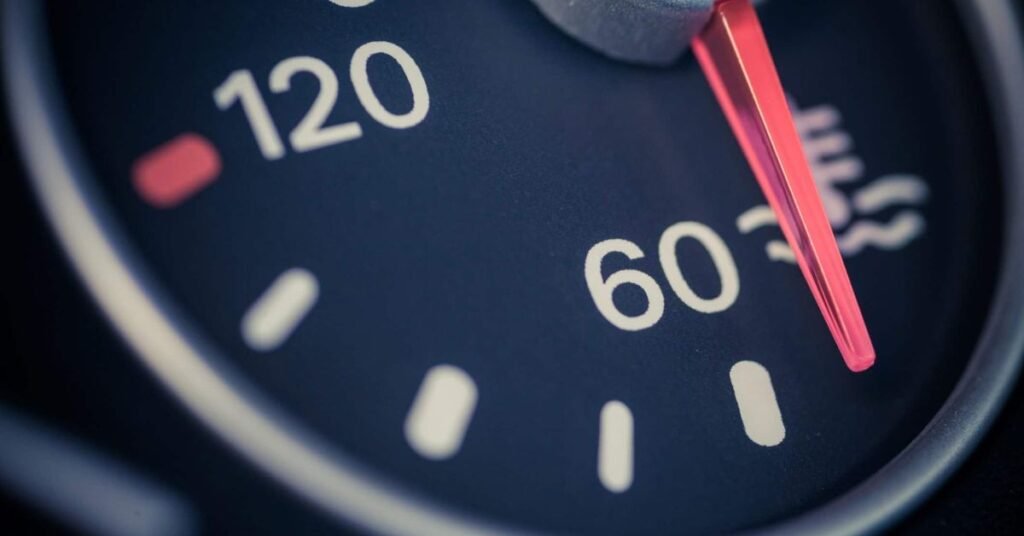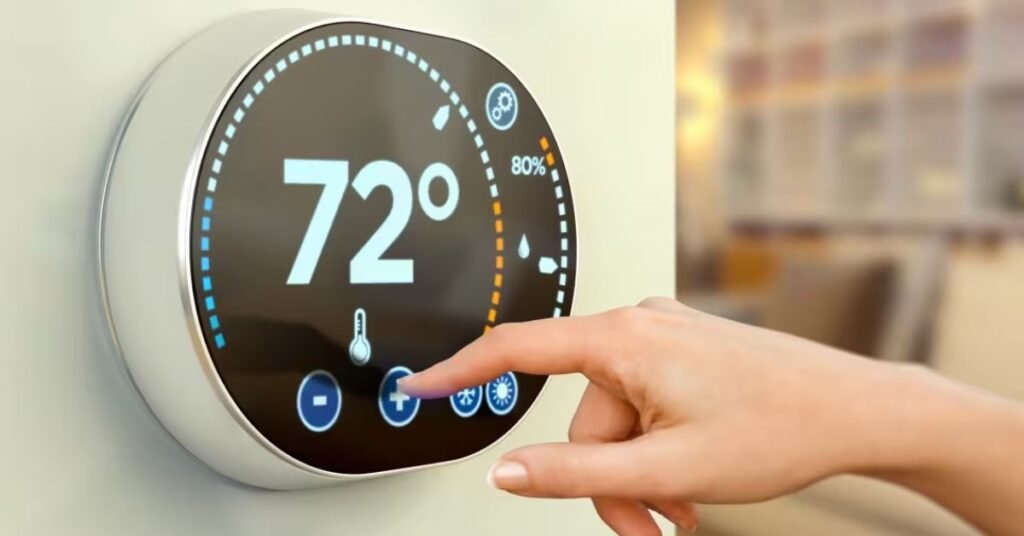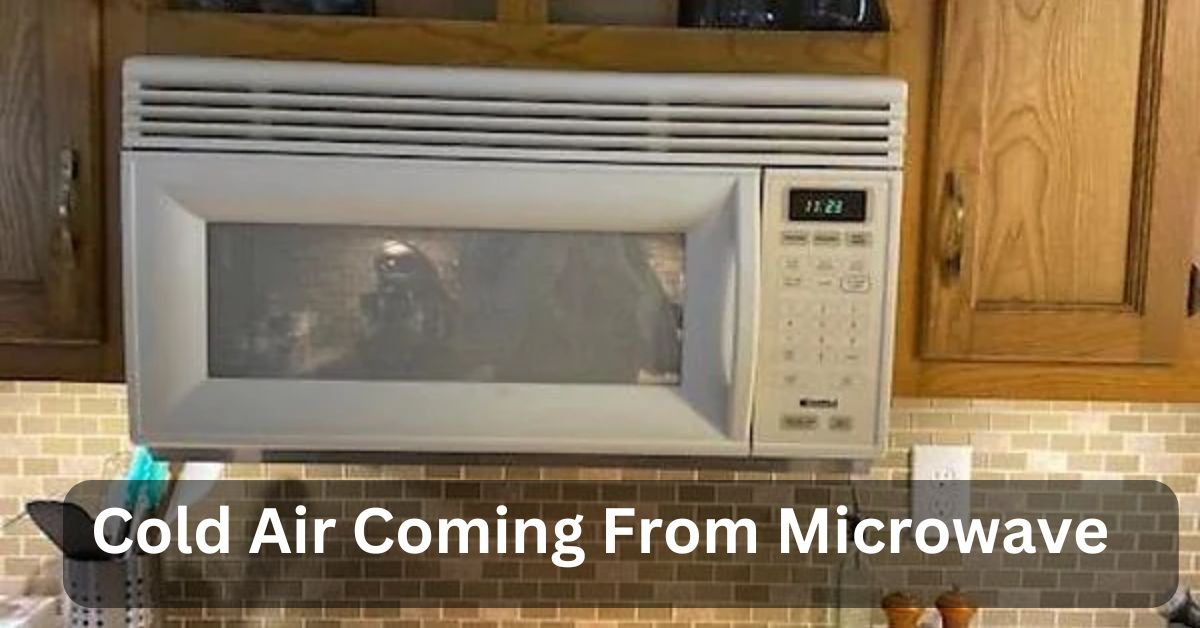If you’ve ever felt cold air coming from your microwave and considered yourself confused, you’re in good company. Many individuals have seen this peculiarity and contemplated whether a microwave flags the virus air coming from it. Is it safe?
Yes, it is protected. This air holds back no radiation of any kind. The air you feel is utilized to cool the parts that power the broiler so they don’t overheat.
In this article, we’ll explain why you might feel cold air coming from your microwave, explain its mechanics, and give a few common tips on what to do about it.
How Microwaves Capability:
1. Convection Cooling System:
Microwaves commonly utilize a convection cooling System to prevent overheating of inner parts. This System includes attracting air from the environmental elements, ignoring its heat-producing parts, and afterwards ousting it back into the climate.
The wind stream disseminates heat productively, guaranteeing the microwave works inside safe temperature limits.
2. Ventilation Plan:
Cold air entering the microwave plays a pivotal role in maintaining ideal working conditions. The ventilation plan of microwaves consolidates consumption vents decisively situated to attract encompassing air. This air, frequently cooler than the inward parts, manages the temperature inside the microwave, preventing overheating during delayed use.

3. Warm Guideline:
As microwaves create heat during activity, particularly from the magnetron—an essential part responsible for delivering microwave radiation—the convergence of cold air supports warm guidance.
By ceaselessly trading warm inward air with cooler outer air, the microwave maintains a decent temperature climate, delaying the life expectancy of basic parts and guaranteeing predictable execution.
4. Preventing Damage and Ensuring Efficiency:
Cold air course acts as a defensive system, protecting delicate electronic parts from warm pressure. Without legitimate cooling, extreme-intensity development can prompt part disappointment and diminished proficiency.
By eliminating warmed air and supplanting it with cooler air from the environment, microwaves guarantee ideal working while at the same time limiting the risk of harm from overheating.
5. Client Safety Contemplations:
Notwithstanding part security and productivity, the presence of cold air coming from a microwave upgrades client safety. By dispersing heat effectively, the risk of outer surfaces becoming excessively hot is diminished, limiting the potential for inadvertent consumption or wounds during activity.
This proactive cooling component provides a more secure client experience, especially in families with kids or pets.
6. Energy Proficiency:
The use of cold air for inside cooling meets energy efficiency standards. By saddling encompassing air to disperse heat, microwaves improve energy use, limiting energy wastage related to excessive intensity age. This eco-accommodating methodology moderates energy and diminishes the natural impression of microwave activity.
Also Read: Why Is My Microwave Popping?-Complete Guide
Distinguishing the Reason:
Cold air radiating from a microwave can show different hidden causes, each requiring explicit consideration for the goal. Here is a breakdown of possible purposes for this peculiarity:
1. Dynamic Cooling System:
A few current microwaves include dynamic cooling System intended to prevent overheating during delayed use. If you feel cold air getting away from the machine, it could essentially be a side effect of this cooling instrument. In such cases, the wind current is purposeful and directs the interior temperature of the microwave.
2. Lacking Protection:
Ill-advised Protection or holes in the microwave’s lodging can permit cold air from the environmental elements to enter the machine. Inadequate Protection might happen because of mileage or assembling surrenders after some time.
Investigating the seals and Protection around the microwave’s entryway and vents can assist with distinguishing regions where cold air might penetrate.
3. Ventilation System Glitch:
A broken ventilation System can upset the harmony between interior and outer wind current, prompting cold air to escape from the microwave. Issues like obstructed vents, damaged fan cutting edges, or a defective fan engine can block legitimate wind flow and cooling.
Checking the ventilation parts for obstacles or indications of harm can pinpoint the source of the issue.
4. Indoor regulator or Temperature Sensor Issue:

Microwaves are outfitted with indoor regulators or temperature sensors to direct inner temperature levels. These parts glitch; they may erroneously see the requirement for cooling, causing chilly air to be ousted superfluously.
Testing and, if essential, supplanting broken indoor regulators or sensors can reestablish appropriate temperature guidelines.
5. Magnetron Overcooling:
The magnetron, liable for producing microwave radiation for cooking, can overheat during broadened activity. Assuming the cooling System is exorbitantly dynamic or failing, it could prompt a perceptible cold wind stream. Checking the magnetron and its related cooling parts can help decide whether over cooling is happening.
Also Read: Candied Grapes-Complete Guide To Make Good Recipe
Moves toward Fix the Issue:
If you’re encountering cold air coming from your microwave and you might want to resolve the issue, here are moves to help you investigate and possibly fix the issue:
1. Review the Ventilation System:
Start by analyzing your microwave’s ventilation arrangement. Check for any apparent hindrances, such as garbage or food particles, that might be hindering the vents. Guarantee that the ventilation pathways are clear and free of obstructions that could upset the wind stream.
2. Check for Harm or Wear:
Assess the seals around the microwave entryway for indications of harm or wear. Harmed seals can permit cold air from environmental factors to enter the machine. Search for any breaks or holes in the microwave’s housing that might be contributing to the cold wind stream.
3. Test the Indoor regulator or Temperature Sensor:

Utilize a multimeter to test the microwave’s indoor regulator or temperature sensor for legitimate usefulness. Adhere to the producer’s directions for testing these parts. If the indoor regulator or sensor is flawed, consider supplanting it with another one to reestablish exact temperature guidelines.
4. Look at the Cooling System:
Look at the cooling System parts, like the fan edges and engine, for indications of harm or glitches. I guarantee that the fan is working without a hitch. Clean any residue or trash that might have amassed on the fan’s sharp edges or inside the cooling System.
5. Adjust Environmental Factors:
Consider natural factors that might be impacting cold wind from the microwave. Guarantee that the machine isn’t situated close to drafts or regions with critical temperature variations. If vital, migrate the microwave to a more steady climate to limit external impacts on its activity.
Also Read: Do Most Hotels Have Microwaves?-Complete Guide
FAQ’s:
1. Why is air emerging from my microwave?
This is typical. The vent fan will consequently turn on during any cooking capability (on specific models) as a cooling fan to safeguard the microwave.
2. For what reason do I feel a breeze from my microwave?
Ledge microwaves have vents on the sides, base, or both to keep them calm while the magnetron creates heat.
3. For what reason does my microwave continue to cool?
Depending on the temperature inside the microwave after a cooking cycle closes, the cooling fan might keep running for quite a while to cool the microwave.
4. Is it typical for microwaves to perspire?
Steam and fume getting away from around the entryway is typical. Ensure food that should be covered while cooking is covered appropriately.
Conclusion:
Feeling cold air coming from your microwave is typically no reason to worry. An ordinary piece of the machine’s cooling System is generally expected to work. In any case, understanding its purposes can assist you in distinguishing when something may be out of order.
Directing essential investigation and knowing when to call an expert guarantees that your microwave keeps working securely and proficiently. Customary support and care will likewise assist with expanding the existence of your microwave, keeping it moving along as expected for quite a long time into the future.

